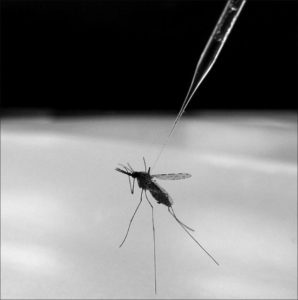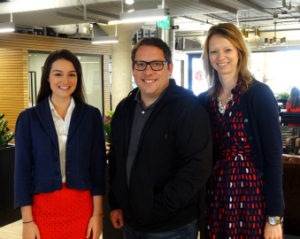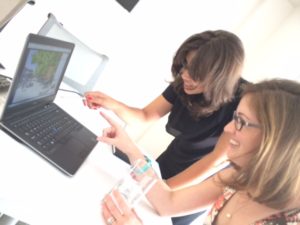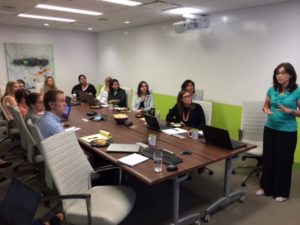JONATHAN WILSON APPOINTED PRESIDENT OF GLOBALHealthPR
Worldwide Health Communications Partnership Welcomes Top Scandinavian Firm, Effector

NEW YORK (March 25, 2016) – GLOBALHealthPR today announced Jonathan Wilson has been named president of the largest independent agency partnership worldwide dedicated to health and science communications. GLOBALHealthPR also welcomed Scandinavian firm Effector as the newest member of the partnership, adding its Copenhagen, Oslo and Stockholm offices to GLOBALHealthPR’s growing presence in 42 countries, spanning five continents.
Word about Wilson’s promotion was first shared with GLOBALHealthPR partner agencies at their annual general meeting in Mumbai in February. John J. Seng, founder and chair of GLOBALHealthPR and founder of Spectrum Science Communications, the U.S. agency partner and owner of the GLOBALHealthPR brand, broke the news to more than 20 partners from 13 different countries during his keynote presentation, to enthusiastic acclaim. Wilson is also president of Spectrum.
“Jonathan Wilson’s leadership at Spectrum and GLOBALHealthPR over more than two years has led to unprecedented growth for the firm and our global partnership,” Seng said. “This outstanding performance as well as Jonathan’s vision for GLOBALHealthPR as a superior, client-focused alternative to the disconnected holding company network model drives today’s announcement of Jonathan as president.”
Headquartered in New York, with regional hub company offices in London and Singapore, GLOBALHealthPR is a partnership of independently owned and operated health and science communications agencies that choose to work together based on common values. With more than 600 health-specialist communications professionals and more than 20 PhDs, researchers and medical advisors on staff, the agencies that make up the partnership share a belief in insights-driven strategies and a commitment to collaboration in order to provide clients the best possible counsel and execution.
“The strength of this unique partnership of global health communications agencies was a huge factor in my decision to join the Spectrum team a number of years ago,” Wilson said. “As an independent network of best-in-class agencies we have deep relationships that lead to true collaboration, fueling strong local insights and seamless execution across borders. Adding Effector and its talented team to GLOBALHealthPR opens more opportunities for collaboration and business growth for all of our partners, and I’m thrilled to welcome them on board.”

Effector is specialized in healthcare communications and brings more than 16 years expertise, primarily serving the pharmaceutical and medical device sectors. The agency was founded by Managing Director Elisabeth Tissot Ludvig, and is the preferred healthcare agency in Denmark to more than 20 pharmaceutical and medical device companies.
Effector shares GLOBALHealthPR partners’ passion for healthcare communications and superior client service.
“We are delighted to join GLOBALHealthPR. Scandinavia is home to some of the most successful healthcare companies, each with a strong tradition of developing medicines and devices that improve people’s lives all over the world,” Tissot Ludvig said “We look forward to offering our clients enhanced international capabilities through the GLOBALHealthPR partnership and, at the same time, providing key insights and expertise to new clients who are entering Scandinavia.”
“The addition of Effector to the GLOBALHealthPR partnership of independent firms further strengthens our ability to offer international-scale health and life science clients the best and broadest reach in expertise and insights,” said Seng. “Elisabeth Tissot Ludvig and her team really rise above in Scandinavia, putting clients first. We’re privileged to welcome Effector to our like-minded partnership.”
About GLOBALHealthPR
GLOBALHealthPR, founded in 2001 by Chair John Seng, consists of leading, health-focused, independent public relations agencies in 42 countries, including Argentina, Australia, Brazil, Canada, Chile, China, Colombia, Costa Rica, Denmark, Finland, France, Germany, Hong Kong, India, Indonesia, Israel, Italy, Malaysia, Mexico, Mozambique, Myanmar, Norway, the Philippines, Poland, Portugal, Qatar, Russia, Saudi Arabia, Singapore, South Africa, South Korea, Spain, Sweden, Switzerland, Taiwan, Thailand, Turkey, the United Arab Emirates, the United Kingdom, the United States, Venezuela and Vietnam. GLOBALHealthPR is headquartered in New York at Spectrum Science Communications. For more information, visit www.globalhealthpr.com or follow us on Twitter: @GLOBALHealthPR.
About Effector
Effector is a pan-Scandinavian communications agency, specialized in healthcare. Effector works for more than 20 companies within the pharmaceutical and medical device sector offering range of services from market access to public affairs and communication. We are driven by our passion for ensuring patients access to some of the best healthcare systems in the world. For more information, visit www.effectorcommunications.com.
Media contact:
GLOBALHealthPR
Timothy Goddard
(212) 468-5372
tgoddard@globalhealthpr.com
Effector
Elisabeth Tissot Ludvig
+45 24695403
etl@effector.dk

 This week, I’ll board a flight on my way from GLOBALHealthPR’s headquarters in New York to visit our partner agency
This week, I’ll board a flight on my way from GLOBALHealthPR’s headquarters in New York to visit our partner agency 
 In the UK, gifts are traditionally delivered by Father Christmas overnight on Christmas Eve. We hang up stockings near the fireplace so when Father Christmas comes down the chimney he can fill our stockings with presents. We also leave a sherry and mince pie for him, and a carrot for his reindeer. Christmas Day is about giving and receiving presents from friends and family and eating as much food as is humanly possible, followed by the Queen’s speech and a snooze.
In the UK, gifts are traditionally delivered by Father Christmas overnight on Christmas Eve. We hang up stockings near the fireplace so when Father Christmas comes down the chimney he can fill our stockings with presents. We also leave a sherry and mince pie for him, and a carrot for his reindeer. Christmas Day is about giving and receiving presents from friends and family and eating as much food as is humanly possible, followed by the Queen’s speech and a snooze. pore, only those who celebrate Christmas will exchange gifts with each other during the Holidays. For Chinese New Year, Ang Pows, red packets containing cash, are the traditional gift of choice. We give them to children, the elderly and the unmarried. You have to make sure the cash in in Ang Pow adds up to an even number like $4, $8 or $10 for good luck.
pore, only those who celebrate Christmas will exchange gifts with each other during the Holidays. For Chinese New Year, Ang Pows, red packets containing cash, are the traditional gift of choice. We give them to children, the elderly and the unmarried. You have to make sure the cash in in Ang Pow adds up to an even number like $4, $8 or $10 for good luck.
 Families come together for a big feast that starts when the first stars begin to show. When the children are not paying attention, someone will vanish from the house to dress up as Santa. ‘Santa’ rings a bell to announce his arrival with presents and then hands gifts out to everybody, in exchange for the singing of a song. ‘Santa’ is of course invited for the feast and some vodka. For many years on, kids remember how they either: Did not recognise Santa was their favourite uncle; or recognised their uncle by his old shoes.
Families come together for a big feast that starts when the first stars begin to show. When the children are not paying attention, someone will vanish from the house to dress up as Santa. ‘Santa’ rings a bell to announce his arrival with presents and then hands gifts out to everybody, in exchange for the singing of a song. ‘Santa’ is of course invited for the feast and some vodka. For many years on, kids remember how they either: Did not recognise Santa was their favourite uncle; or recognised their uncle by his old shoes.
 . Piñatas are filled with candy and small gifts, and we take turns trying to break them open with a bat or broom stick while blindfolded. When someone finally cracks a piñata open, the candy and presents fall to the floor and the kids launch themselves to the ground trying to grab as many sweets and presents as possible. Though piñatas are often present at birthday parties, the tradition is most strongly associated with Christmas.
. Piñatas are filled with candy and small gifts, and we take turns trying to break them open with a bat or broom stick while blindfolded. When someone finally cracks a piñata open, the candy and presents fall to the floor and the kids launch themselves to the ground trying to grab as many sweets and presents as possible. Though piñatas are often present at birthday parties, the tradition is most strongly associated with Christmas. we open gifts on December 24th, precisely at 12:00 a.m. along with a family toast. Everybody shares a good panettone (a sweetbread with dried fruit), and we throw firecrackers in celebration. The children also receive gifts on January 6th, from the Three Wise Men. The kids leave their shoes outside the night of the 5th, with some water and grass for the Wise Men’s camels, and wake up to find presents left by their shoes. At the same time as Christmas we start our summer and school vacations, so common gifts for kids include toys for the beach or the swimming pool.
we open gifts on December 24th, precisely at 12:00 a.m. along with a family toast. Everybody shares a good panettone (a sweetbread with dried fruit), and we throw firecrackers in celebration. The children also receive gifts on January 6th, from the Three Wise Men. The kids leave their shoes outside the night of the 5th, with some water and grass for the Wise Men’s camels, and wake up to find presents left by their shoes. At the same time as Christmas we start our summer and school vacations, so common gifts for kids include toys for the beach or the swimming pool.
 giving tradition is that our children, and of course well-behaved grownups, put their polished shoes in front of the door on the eve of December 6th. Later that night, St. Nicolas arrives to fill the shoes with candy and small gifts. The next morning we decorate the Christmas tree and go to church. After church, we celebrate Christmas with family, sharing gifts, music and a traditional Christmas dinner. Favourite menu items include trout or another fish, potato salad and sausages or duck.
giving tradition is that our children, and of course well-behaved grownups, put their polished shoes in front of the door on the eve of December 6th. Later that night, St. Nicolas arrives to fill the shoes with candy and small gifts. The next morning we decorate the Christmas tree and go to church. After church, we celebrate Christmas with family, sharing gifts, music and a traditional Christmas dinner. Favourite menu items include trout or another fish, potato salad and sausages or duck. open just one gift on Christmas Eve, and everybody knows what’s in the box – Christmas pajamas! This gets everyone ready for bed and looking spiffy for Christmas morning. That night, after the kids have gone to sleep, Santa Claus sneaks down the chimney and leaves presents under the tree for the good boys and girls. In the morning everyone meets up at the tree, looking fly in our Christmas PJ’s, and shares gifts with friends and family.
open just one gift on Christmas Eve, and everybody knows what’s in the box – Christmas pajamas! This gets everyone ready for bed and looking spiffy for Christmas morning. That night, after the kids have gone to sleep, Santa Claus sneaks down the chimney and leaves presents under the tree for the good boys and girls. In the morning everyone meets up at the tree, looking fly in our Christmas PJ’s, and shares gifts with friends and family.


